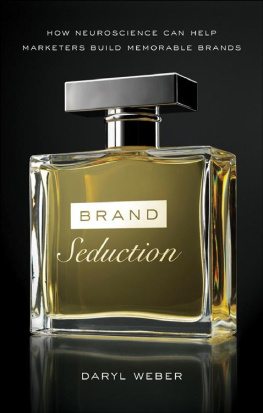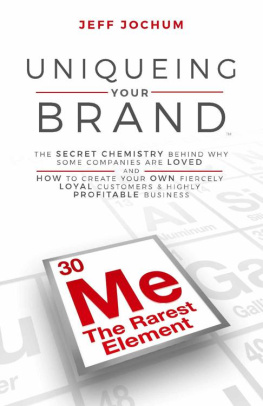
In my research, I learned that 96% of parents find their own
children fascinating. Im no exception. This book is dedicated to
our eight children: Ian, Gunnar, Max, Lura, Karli, Isabelle,
Quinton, and Asher. You are 110% fascinating.
Contents
- The Science of Fascination
STEP INSIDE THE LABORATORY - The Biology of Fascination
WHY YOUR BRAIN WAS DESIGNED TO BE FASCINATED - Fascinate the Goldfish
WHY YOUR OLD TRICKS WONT WORK IN A WORLD WITH A NINE-SECOND ATTENTION SPAN - The Schoolmarm and the Sorcerer
WHY MARKETING IS LOSING ITS POWERS OF PERSUASION - A Million Years of Personal Branding
HOW ALL BRANDING, INCLUDING PERSONAL BRANDING, DATES BACK TO OUR HAIRIER ANCESTORS - Your Brands Advantage
HOW TO IDENTIFY WHAT MAKES YOUR BRAND FASCINATING
- PART II: THE SEVEN FASCINATION ADVANTAGES
How to Make Your Brand Impossible to Resist - Innovation
THE LANGUAGE OF CREATIVITY - Passion
THE LANGUAGE OF RELATIONSHIP - Power
THE LANGUAGE OF CONFIDENCE - Prestige
THE LANGUAGE OF EXCELLENCE - Trust
THE LANGUAGE OF STABILITY - Mystique
THE LANGUAGE OF LISTENING - Alert
THE LANGUAGE OF DETAILS
- PART III: TACTICS
A Practical System to Customize Your Message - PART IV: HOW TO GET STARTED TODAY
Your 5-Step Action Plan
Guide
The Black Magic of Branding
I entered the lobby of TBWA advertising agency on Madison Avenue wearing my new $19.95 white vinyl pumps, my unruly hair gelled back into a bow. It was the summer of 1991, two weeks after my college graduation.
TBWA had recently debuted the iconic Absolut Vodka campaign and was now polishing its fame to blinding perfection. Entering the all-white lobby made most people feel suddenly self-conscious, acutely aware of some otherwise irrelevant detail, such as the fact that the dry cleaners seamstress had recently resewn a button with a slightly off-color thread.
Yet on the first day of my unpaid summer internship, walking into that lobby, I felt no intimidation whatsoever. Not because I possessed that same unattainable cool, but quite the opposite. I was too clueless even to have a clue of how clueless I was.
My first week at my internship, I heard a rumor that the creative departments staff locked their file drawers at night. Why? So no one could steal their ideas. This intrigued me greatly. What kind of intellectual bullion could possibly fill those files? These same employees casually left personal valuables such as watches and cameras on their desks at night, yet neurotically locked their file drawers? Whatever lay inside those OfficeMax treasure chests, I wanted some of it.
At that early stage of my career, the creative process seemed supernatural to me. How could anyone possibly distill the intricacies of a company, then hone them into an idea sharp enough to cut through peoples natural resistance, into their hearts and their brains, ultimately connecting with the magical decision-making hot button that decides which toothpaste or hotel room or politician to choose? I had no idea how a plain, dull fact could metamorphose into a message with the power to change behaviors and beliefs. It seemed like black magic. The alchemy of golden ideas.
Over the course of the summer, I learned (while fetching coffee) why writers and art directors kept their ideas under lock and key. Those scribbles and words could perform witchcraft. Even crumpled cocktail napkins might contain exactly the right doodle to transform struggling companies into market champions. Fascinating ideas could generate hundreds of millions of dollars for the client, realign entire product categories, and become a pop culture phenomenonnot to mention skyrocketing the careers of those behind them.
I longed to write something so valuable that it had to be locked away at night. But I didnt know how.
After my internship, I was hired as a junior copywriter at the legendary agency Wieden + Kennedy. It was a dream job, and I felt the way a young programmer might feel to be hired at the headquarters of Google. I couldnt wait to finally see for myself how to perform this witchcraft Id witnessed in my internship. With stars in my eyes and a skip in my step, I moved to their new office in Philadelphia, ready to create ads for brands such as Nike.
My first day of this new job, still walking on air, I returned to the office after a cheese steak lunch. Entering the lobby, I saw the entire staff standing in a circle. Wow, I trilled to myself, agency life is so social! Turns out, this wasnt a social event. It was a layoff. The office was closing after the loss of a key client.
Well, itd been a great three hours.
I moved back home, still wondering how to create million-dollar ideas.
Marshall McLuhan wrote, Historians and archaeologists will one day discover that the ads of our time are the richest and most faithful daily reflections any society ever made of its whole range of activities. But how were these ads created, exactly? While searching for my next job, at night I studied books about advertising. I pored over famous ads, trying to decode the thinking process behind them, hoping to one day wave a wand and make ideas appear.
My favorite advertising copywriter was Luke Sullivan, in Minneapolis. His saber-toothed wit and strategic elegance impressed me greatly. One day my phone rang and my jaw dropped. Sally, this is Luke Sullivan. Come work at my agency. Off I moved, eager to learn this mysterious thing called branding.
While it snowed outside, I thrived inside the agency, learning from some of the most award-winning professionals in the field. Each department within an agency specializes in a different type of thought process, from research and strategy to media and design. I adored them all. By the time those cryogenic pumpkins emerged from the melting ice in April, still smiling, my training was well under way.
In my mid-twenties, I became one of the most award-winning copywriters in the United States. My career accelerated from copywriter to creative director, from New York to Los Angeles, from small assignments to global campaigns.
If you watch Mad Men, you know that ad agencies can seem like sexy, tempestuous workplaces, filled with adrenaline and Ping-Pong tables. Traditional agencies can deliver amazingly customized service and handholding, and any type of marketing you can think of. On the downside, theyre extremely expensive for clients (for a single color copy, a client might be billed thirty dollars), and brutally intense for the staff. Ive seen employees bring a couch into their office for all-nighters.
I wanted something different. At age twenty-seven, I opened my own ad agency in L.A. It was a dizzying time to be in advertising, right at the cusp of the dot-com bubble. Entrepreneurs who had never turned a profit had money to burn.
Instead of buying into the hype, my agency cofounder and I wanted to create a new breed of advertising, less traditional and more unexpected. Unlike the fabled agencies Id worked in before, which had impressive lobbies and catered lunches, we wanted to be a true start-up. Yet what we lacked in marble washrooms, we made up for in audacity.
Apple Computers famously began as a start-up in a garage. Our building was also a garagea converted mechanics garage on Electric Avenue in Venice Beach, California. We opened our doors in 1997 (or should I say, rolled up our doors). It was a notoriously sketchy area, and occasionally during conference calls, clients might ask if that was gunfire they had heard on speakerphone. The neighborhood ice cream truck driver didnt coast merrily along; he floored it to avoid getting caught. Every day was an adventure, and we loved every minute.
Next page

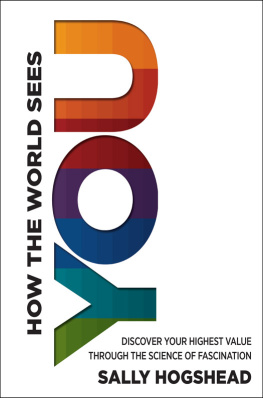

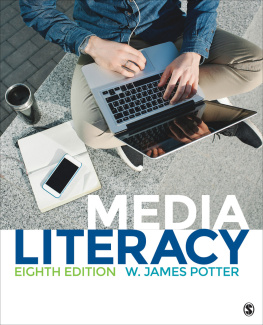
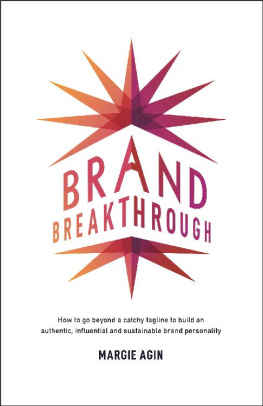
![Haydon - Facebook marketing for dummies: a Wiley Brand; [Lear to: Create, administer, and customize your timeline; build an engaged fan base with Likes, Shares, and Comments; ...]](/uploads/posts/book/211800/thumbs/haydon-facebook-marketing-for-dummies-a-wiley.jpg)


